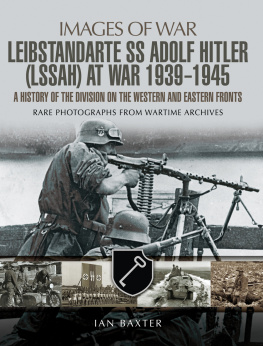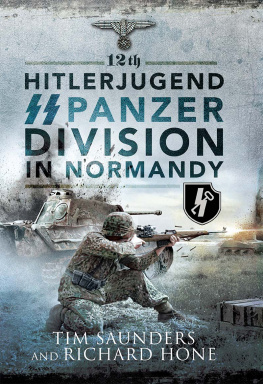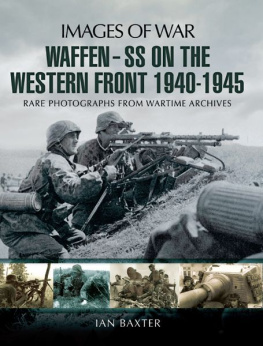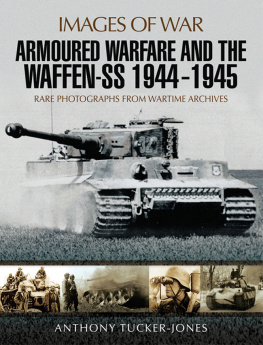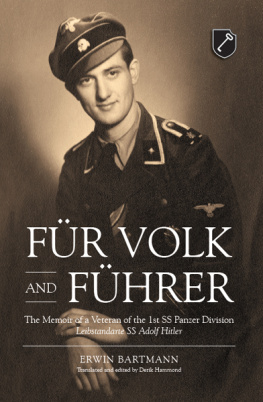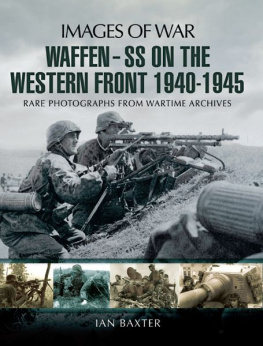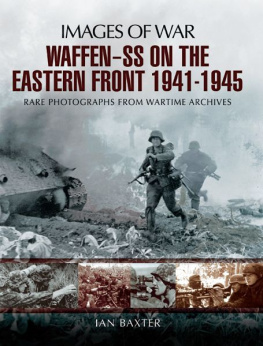
IMAGES OF WAR
LEIBSTANDARTE SS ADOLF HITLER AT WAR 1939-1945
RARE PHOTOGRAPHS FROM WARTIME ARCHIVES
Ian Baxter
First published in Great Britain in 2017 by
PEN & SWORD MILITARY
An imprint of
Pen & Sword Books Ltd
47 Church Street
Barnsley
South Yorkshire
S70 2AS
Copyright Ian Baxter, 2017
ISBN 978-1-47389-085-5
eISBN 978-1-47389-087-9
Mobi ISBN 978-1-47389-086-2
The right of Ian Baxter to be identified as author of this work has been asserted by him in accordance with the Copyright, Designs and Patents Act 1988.
A CIP catalogue record for this book is available from the British Library.
All rights reserved. No part of this book may be reproduced or transmitted in any form or by any means, electronic or mechanical including photocopying, recording or by any information storage and retrieval system, without permission from the Publisher in writing.
Pen & Sword Books Ltd incorporates the imprints of Pen & Sword Archaeology, Atlas, Aviation, Battleground, Discovery, Family History, History, Maritime, Military, Naval, Politics, Railways, Select, Social History, Transport, True Crime, and Claymore Press, Frontline Books, Leo Cooper, Praetorian Press, Remember When, Seaforth Publishing and Wharncliffe.
For a complete list of Pen & Sword titles please contact
PEN & SWORD BOOKS LIMITED
47 Church Street, Barnsley, South Yorkshire S70 2AS, England
E-mail:
Website: www.pen-and-sword.co.uk
About the Author
I an Baxter is a military historian who specialises in German twentieth century military history. He has written more than forty books including Wolf Hitlers Wartime Headquarters , Poland The Eighteen Day Victory March , Panzers in North Africa , The Ardennes Offensive , The Western Campaign , The 12th SS Panzer Division Hitlerjugend , The Waffen-SS on the Western Front , The Waffen-SS on the Eastern Front , The Red Army at Stalingrad , Elite German Forces of World War II , Armoured Warfare , German Tanks of War , Blitzkrieg , Panzer Divisions at War , Hitlers Panzers , Panzer Markings of World War Two , German Armoured Vehicles of World War Two , German Guns of the Third Reich and most recently The Last Two Years of the Waffen-SS at War , SS of Treblinka , Hoess creator of Auschwitz , Auschwitz Death Camp , The SS of Treblinka , Battle of the Baltics , Battle for the Reich , Hitlers Heavy Panzers , German Army on the Eastern Front , German Army on the Western Front , Last Years of the German Army , and Concentration Camp Guards . He has written over a hundred articles including Last Days of Hitler, Wolfs Lair, The Story of the V1 and V2 Rocket Programme, Secret Aircraft of World War Two, Rommel at Tobruk, Hitlers War with his Generals, Secret British Plans to Assassinate Hitler, The SS at Arnhem, Hitlerjugend, Battle of Caen 1944, Gebirgsjger at War, Panzer Crews, Hitlerjugend Guerrillas, Last Battles in the East, Battle of Berlin, Destruction of Busses Ninth Army, and many more. He has also reviewed numerous military studies for publication, and supplied thousands of photographs and important documents to various publishers and film production companies worldwide.
Introduction
F rom its organisation, to its training, to its fighting on the Western and then the Eastern Front, this book describes the fighting tactics, the uniforms, the battles and the different elements that went into making the Leibstandarte SS Adolf Hitler (LSSAH) the elite fighting unit that it was. It describes how the LSSAH carefully built up its assault forces, utilising all available resources, making into an awesome killing machine. It depicts how it grew to be used in both offensive and later defensive battles, and provides much historical information and many facts about the weapons and components that made it up. Throughout the chapters it describes how the LSSAH fought in some of the fiercest and bloodiest battles of the Second World War, how it evolved, and how during the last years of the war it was shifted from one disintegrating part of the front to another in a desperate attempt to stabilise the crumbling war effort.
With 194 rare and unpublished photographs, captions and text, Leibstandarte SS Adolf Hitler at War 19391945 brings together a captivating glimpse of the workings of one of the most effective SS weapons ever used in military history.
A Brief History
T he history of what later became known as the 1st SS-Panzer Division Leibstandarte SS Adolf Hitler (1.SS-Pz.Div.LSSAH) began in 1925 as Adolf Hitlers personal bodyguard unit, or Schutzkommando (protection commando). Its duties included guarding the Fhrer and protecting his offices and residences. The unit was later renamed the Sturmstaffel (assault squadron) and later the Schutzstaffel (guard detachment) and abbreviated to SS.
By 1933 the SS had increased in size dramatically from a small bodyguard unit to a formation of over 50,000 men. It was then decided to create a new bodyguard unit, comprising mainly men from the 1st SS-Standarte. During this period the two Sonderkommandos were merged into what was called the SS-Sonderkommando Berlin under the dutiful command of Josef Sepp Dietrich. In November 1933, during the 10th anniversary of the Beer Hall putsch, the members of the Sonderkommando swore personal allegiance to Hitler and the unit received a new title, Leibstandarte Adolf Hitler (LAH).
Five months later, on 13 April 1934, SS-Reichsfhrer Heinrich Himmler, commander of the SS, ordered the LAH to be renamed Leibstandarte SS Adolf Hitler (LSSAH). The LSSAH were immediately formed into two companies under the control of Jrgen Wagner and Otto Reich.
The LSSAH was given the task of guard of honour at a number of the Nuremberg rallies. In 1935 it moved its formations into the Saarland where they reoccupied it. The LSSAH was later in the vanguard of the march into Austria as part of the Anschluss, and in 1938 the unit took part in the occupation of the Sudetenland.
By late 1938 the LSSAH became a full infantry regiment with three infantry battalions, an artillery battalion, and anti-tank, reconnaissance and engineer sub-units. It then became involved in the annexation of Bohemia and Moravia and was redesignated Infanterie-Regiment Leibstandarte SS Adolf Hitler (mot.) .
In mid-1939 Hitler ordered the formation of an SS division, and as a direct consequence the Leibstandarte was designated to form its own unit and readied for war.
Chapter One
Training for War
B etween 1933 and 1939, the power of the SS grew considerably with thousands of men being recruited into the new ideological elite armed formation under the command of Himmler. Every recruit was expected to meet stringent criteria. Every volunteer had to be fit with excellent racial features and produce a certificate of good behaviour from the police. During their tough training programme new recruits were indoctrinated with a fanatical determination to fight for the Fhrer, a willingness to shed their own blood on the battlefield, and a blind allegiance to obey every order, even if that meant shooting prisoners and committing atrocities against civilians.
Initial training was carried out in various depots outside each SS-VT regiments home town and was tough and demanding. On the rifle ranges recruits became used to their rifles and, once familiar, were taught infantry assault techniques that included charging at sandbags with fixed bayonets. Every instructor placed emphasis on aggression on the battlefield, physical endurance, a determination to overcome the enemy quickly and efficiently with the least number of friendly casualties, and to win at all costs. Every candidate was pushed to the limits of endurance, being regularly sent on long marches in order to develop stamina. Out on exercise they carried only weapons, ammunition, water bottles and field dressings, and were not weighed down by heavy packs like their Army counterparts.
Next page
